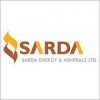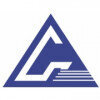Mines Manager
10+ Mines Manager Interview Questions and Answers
Asked in Derba MIDROC Cement

Q. What are the main parameters of drilling and blasting operations in surface mining?
Main parameters for drilling & blasting in surface mining include blast design, hole diameter, hole depth, explosive type, and blast timing.
Blast design: determining the layout, pattern, and sequencing of blasts to optimize fragmentation and minimize environmental impact
Hole diameter: the size of the drill hole affects the amount of explosives needed and the resulting fragmentation
Hole depth: deeper holes allow for larger blasts but require more precise drilling to avoid misf...read more
Asked in Derba MIDROC Cement

Q. How do you determine the number of trucks needed for loading equipment?
The number of trucks for loading equipment can be determined based on factors such as production capacity, distance to transport, and availability of loading equipment.
Consider the production capacity of the mine to determine the number of trucks needed for efficient transportation.
Evaluate the distance that the trucks need to travel to transport the materials and adjust the number of trucks accordingly.
Take into account the availability of loading equipment to ensure smooth ...read more
Asked in Derba MIDROC Cement

Q. What are the main parameters to determine the slope angle in surface mines?
Main parameters for determining slope angle in surface mines
Geological conditions of the ore body
Stability of the rock and soil
Equipment capabilities and safety regulations
Economic factors such as cost of extraction
Environmental considerations
Example: A steeply dipping ore body may require a steeper slope angle for efficient extraction
Asked in Gurushree Minerals

Q. What should be the mine planning to ensure smooth operations?
Proper planning is crucial for the efficient functioning of mines.
Develop a comprehensive mine plan that includes exploration, development, production, and closure.
Ensure compliance with all safety and environmental regulations.
Implement effective communication and collaboration among all stakeholders.
Regularly assess and adjust the plan based on changing conditions and new information.
Invest in modern technology and equipment to improve efficiency and productivity.
Train and ...read more
Asked in Derba MIDROC Cement

Q. What is cycle time in the transportation of raw materials?
Cycle time in transportation of raw materials refers to the total time taken for a round trip of transporting raw materials from one point to another.
Cycle time includes loading, transportation, unloading, and any waiting time in between.
Efficient logistics planning can help reduce cycle time and improve overall productivity.
For example, if it takes 2 hours to load materials, 1 hour to transport them, and 1 hour to unload, the cycle time would be 4 hours.
Asked in Tamilnadu Minerals

Q. What are the common causes of accidents in mines?
Accidents in mines can be caused by various factors such as human error, equipment failure, natural disasters, and inadequate safety measures.
Human error: Lack of training, negligence, and fatigue can lead to accidents.
Equipment failure: Malfunctioning machinery or faulty equipment can cause accidents.
Natural disasters: Earthquakes, floods, and landslides can result in mine accidents.
Inadequate safety measures: Insufficient safety protocols, lack of proper ventilation, and in...read more
Mines Manager Jobs



Asked in Derba MIDROC Cement

Q. What are the different types of benches?
Bench benches are typically categorized as production benches, development benches, and service benches in a mine.
Production benches are used for extracting ore and are typically larger in size.
Development benches are used for infrastructure development within the mine.
Service benches are used for maintenance and support activities.
Each type of bench serves a specific purpose in the mining operation.
Asked in Lafarge Umiam Mining

Q. What are the statutory compliance requirements?
Statutory compliance refers to the legal requirements that organizations must follow to operate within the law.
Statutory compliance includes adherence to laws related to labor, environment, safety, taxation, and more.
Examples of statutory compliance include obtaining necessary licenses and permits, filing tax returns, maintaining employee records, and ensuring workplace safety.
Non-compliance with statutory requirements can result in legal penalties, fines, and reputational da...read more
Share interview questions and help millions of jobseekers 🌟

Asked in Lafarge Umiam Mining

Q. How do you improve fragmentation?
Improving fragmentation can be achieved through various methods.
Using proper drilling and blasting techniques
Optimizing the blasting parameters
Using appropriate explosive types and quantities
Implementing effective loading and hauling practices
Regularly maintaining and upgrading equipment
Conducting regular fragmentation analysis and adjusting practices accordingly

Asked in Amazon

Q. How can production be increased?
Increasing production can be achieved through optimizing processes, improving equipment, and investing in training and development.
Analyze current processes and identify areas for improvement
Invest in new equipment or upgrade existing equipment
Implement training and development programs for employees
Set production targets and regularly monitor progress
Encourage employee involvement and feedback
Consider outsourcing non-core activities
Implement lean manufacturing principles
Stre...read more
Asked in Lafarge Umiam Mining

Q. How do you control costs?
Cost control is achieved through effective planning, budgeting, and monitoring of expenses.
Develop a detailed budget plan and stick to it
Regularly monitor expenses and identify areas for cost reduction
Negotiate with suppliers for better pricing
Implement efficient processes and technologies to reduce waste and improve productivity
Train employees on cost-saving measures
Regularly review and adjust the budget as needed

Asked in Jindal Industries Private Limited

Q. How do you control dust in open-cast mining?
Dust in open cast can be controlled by implementing various measures such as water spraying, vegetation cover, wind barriers, and using dust suppressants.
Regular watering of roads and stockpiles to keep the dust settled
Planting vegetation around the mining area to reduce dust levels
Installing wind barriers like fences or screens to prevent dust from spreading
Using dust suppressants such as chemicals or foams to control dust emissions
Implementing proper haul road maintenance t...read more

Asked in Jindal Industries Private Limited

Q. Can you describe your experience in the mining field?
I have extensive experience in mining, focusing on safety, operations, and team management to optimize productivity and compliance.
Over 10 years of experience in underground and surface mining operations.
Managed a team of 50+ workers, ensuring adherence to safety protocols.
Implemented new technologies that increased ore recovery by 15%.
Conducted regular training sessions on equipment operation and safety.
Collaborated with environmental teams to minimize ecological impact.

Asked in SBI Life Insurance Company

Q. What is the planning?
Planning is the process of setting goals, defining objectives, and determining the actions needed to achieve them.
Planning involves identifying the resources required to achieve the goals
It involves creating a timeline for the completion of tasks
It involves assigning responsibilities to team members
It involves monitoring progress and making adjustments as necessary
Examples of planning in mining include developing a mine plan, scheduling equipment maintenance, and coordinating...read more

Asked in Jindal Industries Private Limited

Q. Slop stability in mining engineering
Slop stability is crucial in mining engineering to prevent accidents and ensure efficient operations.
Slop stability refers to the ability of a slope to withstand the forces acting upon it without failing or collapsing.
Factors affecting slop stability include slope angle, geology of the rock mass, presence of water, and mining activities.
Monitoring and analysis of slope stability is essential to prevent accidents and ensure worker safety.
Methods to improve slope stability incl...read more
Interview Questions of Similar Designations
Interview Experiences of Popular Companies






Calculate your in-hand salary
Confused about how your in-hand salary is calculated? Enter your annual salary (CTC) and get your in-hand salary


Reviews
Interviews
Salaries
Users










